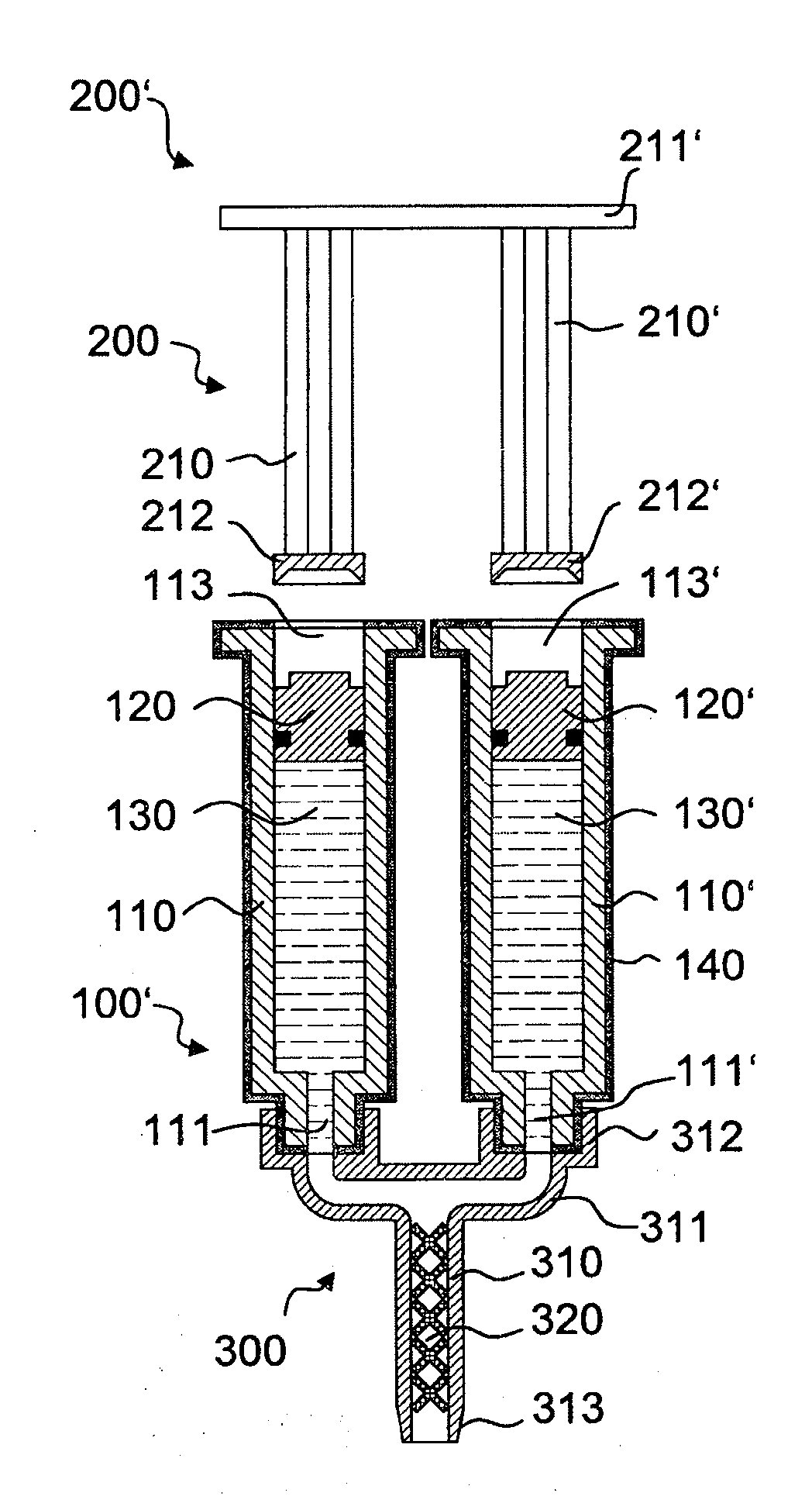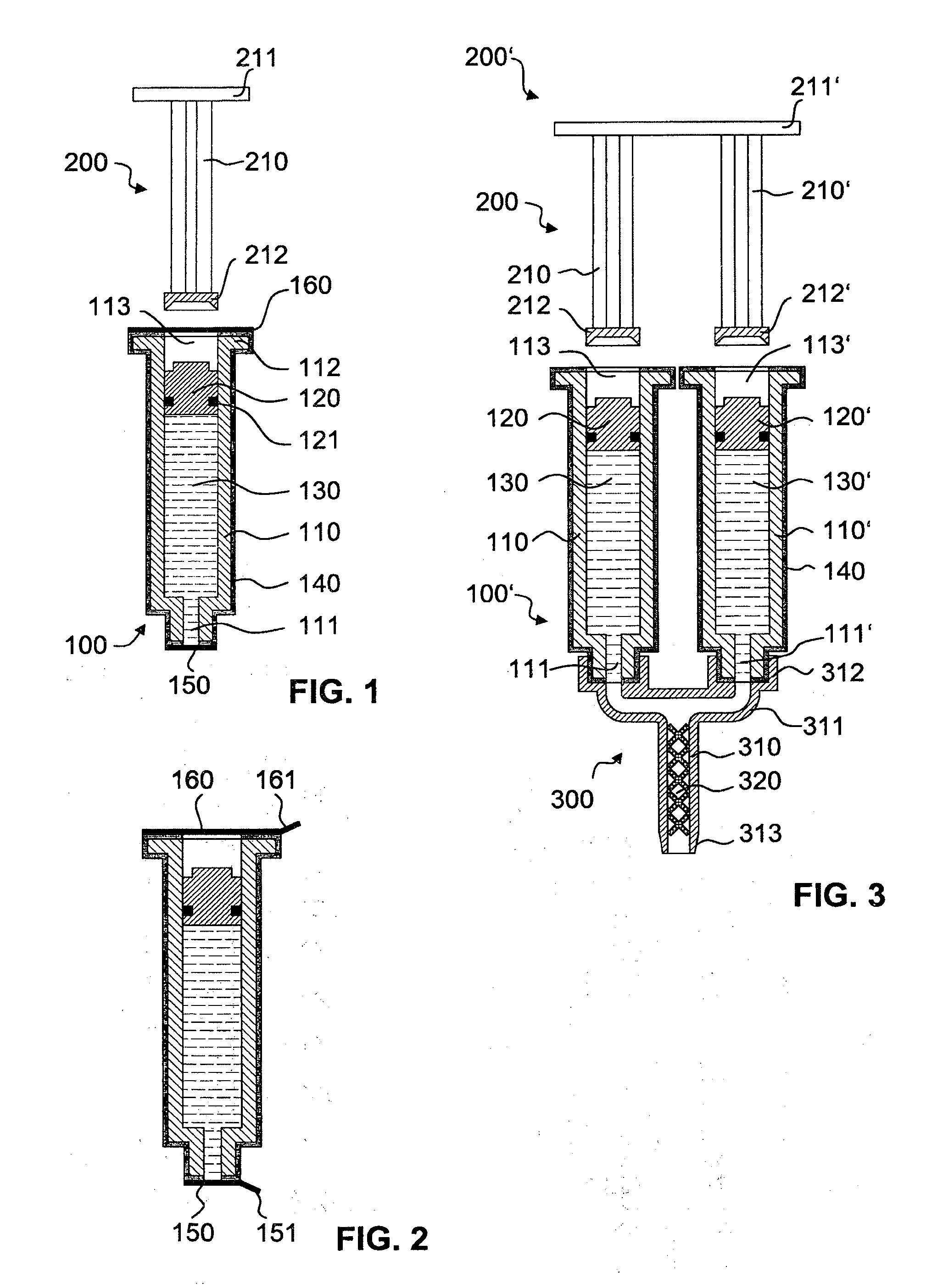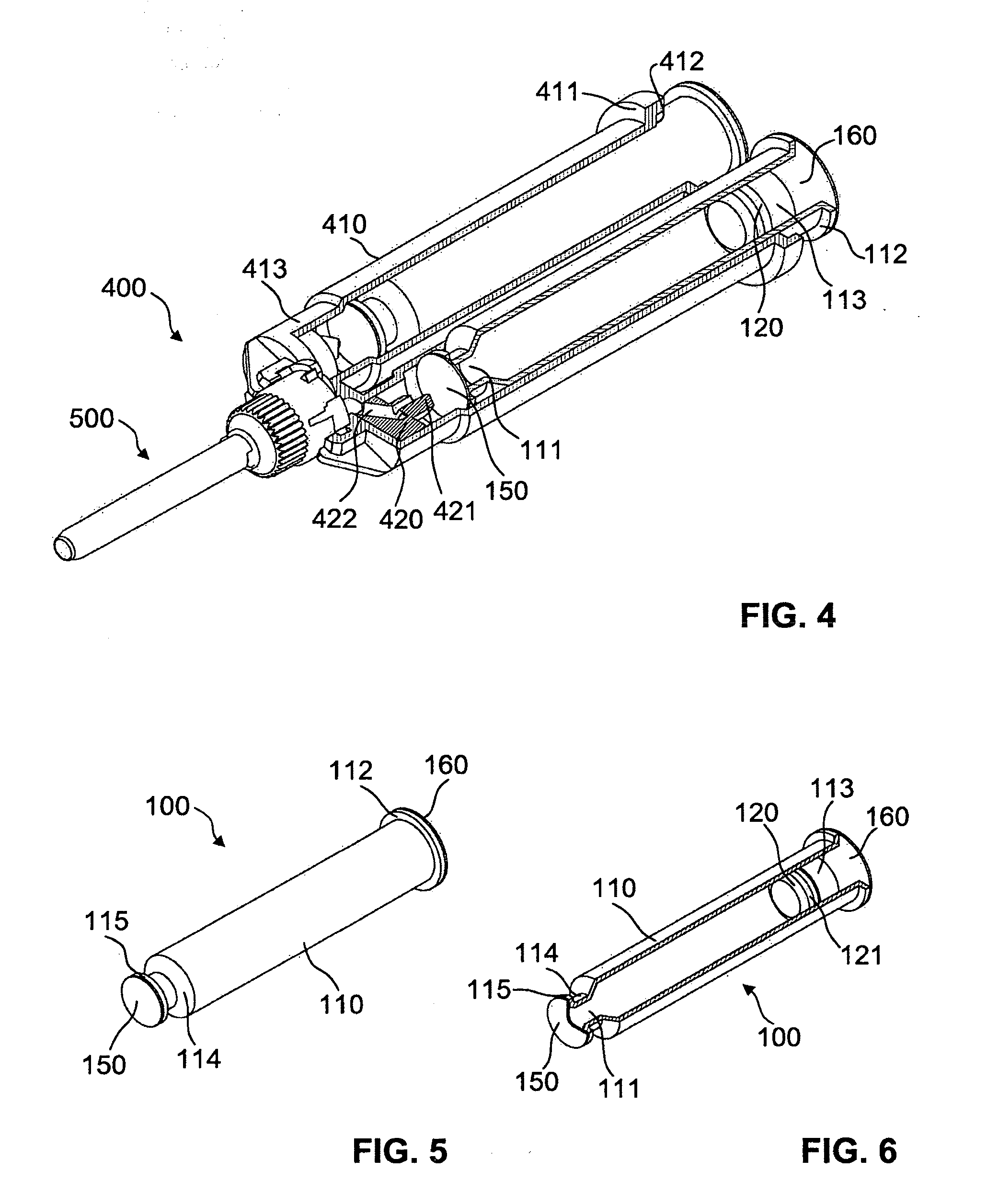Sealed container comprising a displaceable piston
a technology of sealing container and displaceable piston, which is applied in the field of sealing container, can solve the problems of insufficient barrier against the diffusion of contents from the interior of the container, the inability to fill the ampule after the coating is applied, and the products stored in containers made of such plastics can undergo undesirable changes in their properties, so as to reduce the permeability
- Summary
- Abstract
- Description
- Claims
- Application Information
AI Technical Summary
Benefits of technology
Problems solved by technology
Method used
Image
Examples
first embodiment
[0045]In FIG. 1, a container 100 is illustrated in highly schematic form. A hollow cylindrical main body (syringe body) 110 has an outlet opening 111 in a narrowed distal end area and has an actuation opening 113 at the opposite, proximal end. In the area of the actuation opening 113, a circumferential and radially outwardly projecting flange 112 is formed in order to permit a better hold of the syringe body 110 in the axial direction. This flange is flush, on the proximal face thereof, with that area of the syringe body surrounding the actuation opening 113. A piston 120 is arranged displaceably in the syringe body 110. The piston 120 is sealed by an O-ring 121 against the inner face of the wall of the syringe body 110. Another kind of seal is of course also possible. On its outer surface, the syringe body 110 has a coating in the form of a metallic barrier layer 140, which extends across the entire surface of the outside of the syringe body except for the openings 111, 113. The co...
second embodiment
[0049]FIG. 3 is a highly schematic illustration of a second embodiment, in which the container 100′ is designed as a double syringe. Parts having the same function are designated by the same reference numbers as in FIG. 1. In addition to the first syringe body 110, a second syringe body 110′ arranged parallel to the latter is present, with a second outlet opening 111′ and a second actuation opening 113′. In this syringe body, a second piston body 120′ is arranged which, together with the syringe body, delimits a second product-receiving area for a second product 130′. The two syringe bodies 110, 110′ are rigidly connected to each other via a material bridge, not shown in FIG. 3. They are together provided with a coating 140.
[0050]In FIG. 3, the double syringe is shown after the seals have been removed. In the area of the outlet openings, a mixer 300 is connected in a securing area 312 to the container 100′. The mixer 300 has a mixing tube 310 with a static mixing element 320 and two...
PUM
| Property | Measurement | Unit |
|---|---|---|
| Fraction | aaaaa | aaaaa |
| Flow rate | aaaaa | aaaaa |
| Area | aaaaa | aaaaa |
Abstract
Description
Claims
Application Information
 Login to View More
Login to View More - R&D
- Intellectual Property
- Life Sciences
- Materials
- Tech Scout
- Unparalleled Data Quality
- Higher Quality Content
- 60% Fewer Hallucinations
Browse by: Latest US Patents, China's latest patents, Technical Efficacy Thesaurus, Application Domain, Technology Topic, Popular Technical Reports.
© 2025 PatSnap. All rights reserved.Legal|Privacy policy|Modern Slavery Act Transparency Statement|Sitemap|About US| Contact US: help@patsnap.com



